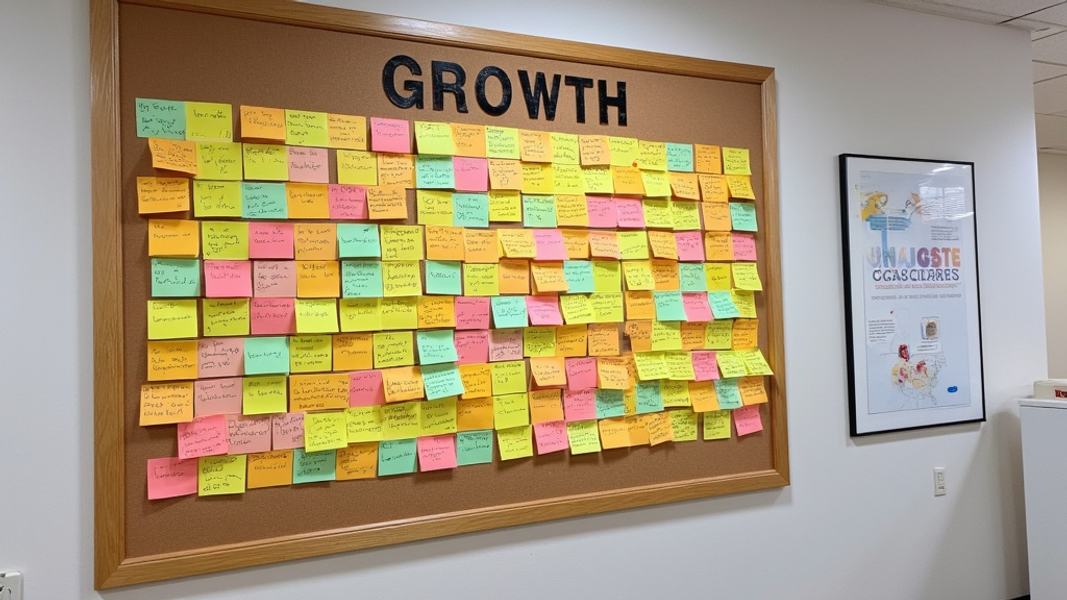
Email marketing remains a top tool for businesses to connect with customers. A strong email list is key to success in this area. This post will share practical tips to grow and improve your email list for better results.
Why Email Lists Matter
Email lists are vital for any business looking to build lasting relationships with customers. Unlike social media platforms where your reach can be limited by algorithms, email gives you direct access to your audience's inbox. This direct line of communication allows for more personal and targeted messaging.
Direct Communication Channel
When someone joins your email list, they're inviting you into their personal space. This level of trust is hard to find on other platforms. With email, you can speak directly to your customers about their needs and interests. This direct approach often leads to stronger connections and more sales.
Higher Conversion Rates
Email marketing often outperforms other digital marketing channels when it comes to conversions. People on your email list have already shown interest in your brand by signing up. This means they're more likely to buy from you compared to someone who just stumbles upon your website.
Owned Media You Control
Social media platforms can change their rules at any time, affecting how you reach your audience. But with an email list, you own the contact information and can reach out whenever you want. This control is priceless in a world where online platforms come and go.
Building Your Email List
Growing your email list takes time and effort, but the rewards are worth it. Here are some proven strategies to help you build a strong and engaged email list.
1. Create Compelling Opt-in Offers
To get people to join your email list, you need to offer something valuable in return. This could be a free resource, exclusive content, or a special discount. These offers, often called lead magnets, should solve a problem or fulfill a need for your target audience.
For example, if you run a fitness blog, you might offer a free workout plan or healthy recipe book. If you sell software, you could provide a free trial or a detailed guide on how to solve a common industry problem. The key is to make your offer so appealing that people can't resist signing up.
2. Optimize Your Sign-up Forms
Your sign-up forms should be easy to find and use. Keep them simple by asking for minimal information at first – usually just an email address is enough to start. You can always gather more details later.
Place your forms in prominent spots on your website, such as the header, footer, or sidebar. You might also consider adding a sign-up option to your checkout process for e-commerce sites. The easier you make it for people to join, the more likely they are to do so.
3. Leverage Pop-ups and Exit-intent Forms
While some people find pop-ups annoying, they can be very effective when used correctly. Timed pop-ups that appear after a visitor has been on your site for a while can catch their attention without being too intrusive.
Exit-intent pop-ups, which appear when someone is about to leave your site, can be a last chance to capture an email address. These often work well with a special offer or discount to entice the visitor to stay.

Growing Your List Faster
Once you have the basics in place, you can use these strategies to accelerate your list growth.
1. Utilize Social Media
Your social media followers are prime candidates for your email list. Share snippets of your email content on social platforms to show the value of being a subscriber. You can also run contests or giveaways where entering requires an email address.
Paid social ads can also be a powerful tool for list growth. Platforms like Facebook and Instagram allow you to target ads to people who are likely to be interested in your offerings.
2. Collaborate with Others
Partnering with other businesses or influencers in your industry can expose your brand to new audiences. Guest posting on popular blogs in your niche can drive traffic back to your site and your email sign-up forms.
Joint webinars or online events are another great way to grow your list. By teaming up with a complementary business, you can tap into each other's audiences and provide value to both.
3. Offline List Building
Don't forget about offline opportunities to grow your list. If you attend trade shows or networking events, have a way to collect email addresses from interested people. You could use a tablet with a sign-up form or good old-fashioned pen and paper.
QR codes on your business cards or promotional materials can make it easy for people to sign up on the spot. If you have a physical store, train your staff to ask customers if they'd like to join your email list for exclusive offers and updates.
Maintaining a Healthy Email List
Building your list is just the first step. To keep it effective, you need to maintain it regularly.
1. Regular List Cleaning
Over time, some email addresses on your list will become inactive or invalid. Regularly removing these can improve your delivery rates and engagement metrics. Most email marketing platforms have tools to help you identify and remove inactive subscribers.
Implementing a double opt-in process, where subscribers confirm their email address, can help ensure you're only adding real, interested people to your list.
2. Segmentation Strategies
Not all subscribers are the same, and they shouldn't all receive the same emails. Segmenting your list allows you to send more targeted, relevant content to different groups.
You might segment based on demographics, purchase history, or engagement level. For example, you could send different content to new subscribers versus long-time customers, or tailor your offers based on past purchases.
3. Personalization Techniques
People are more likely to engage with emails that feel personal to them. Using a subscriber's name in the subject line or email body is a simple way to add personalization.
But you can go further by sending content based on a subscriber's interests or behavior. If someone often clicks on links about a certain topic, send them more content in that area. Mailchimp and other email marketing tools offer features to help with this kind of personalization.
Email List Best Practices
Following these best practices will help you maintain a high-quality, engaged email list.
1. Focus on Quality Over Quantity
It's better to have a smaller list of engaged subscribers than a large list of people who never open your emails. Avoid the temptation to buy email lists – these often lead to poor engagement and can harm your sender reputation.
Instead, focus on attracting subscribers who are truly interested in what you offer. Encourage your current subscribers to share your emails with friends who might be interested. Word-of-mouth referrals often lead to high-quality subscribers.
2. Provide Consistent Value
Your emails should offer value to your subscribers, not just constant sales pitches. Mix promotional content with helpful information, tips, or entertainment related to your industry.
Be sure to deliver on any promises you made when people signed up. If you offered weekly tips, make sure you're sending them regularly. Consistency builds trust and keeps subscribers engaged.

3. Respect Subscriber Privacy
Protecting your subscribers' privacy is crucial for maintaining trust. Have a clear privacy policy that explains how you'll use their information. Make it easy for people to unsubscribe if they want to – it's better to let uninterested subscribers go than to keep them on your list unwillingly.
Be sure to comply with email regulations like GDPR in Europe or CAN-SPAM in the US. These laws set rules for how businesses can collect and use email addresses.
Measuring Email List Success
To know if your email list strategies are working, you need to track key metrics.
1. Key Metrics to Track
List growth rate shows how quickly your list is growing. A healthy list should show steady growth over time.
Open rates tell you how many people are actually opening your emails. A good open rate varies by industry, but generally, anything above 20% is considered good.
Click-through rates show how many people are clicking on links in your emails. This is a good indicator of how engaging your content is.
2. A/B Testing Strategies
A/B testing involves sending two slightly different versions of an email to see which performs better. You might test different subject lines, email designs, or calls to action.
Most email marketing platforms like Constant Contact or SendinBlue have built-in A/B testing tools. Use these to continually improve your email performance.
3. Tools for Email List Analytics
Many email marketing platforms offer detailed analytics. These can show you which emails are performing best, when people are most likely to open your emails, and which links get the most clicks.
Google Analytics can also be useful for tracking what happens after someone clicks a link in your email. You can see how email traffic behaves on your website compared to other traffic sources.
FAQs
How often should I email my list?
There's no one-size-fits-all answer to this question. It depends on your industry and what you promised when people signed up. Generally, emailing once a week or a few times a month is a good starting point. Pay attention to your open rates and unsubscribe rates to see if you're emailing too much or too little.
Is it okay to buy email lists?
Buying email lists is not recommended. These lists often contain outdated or incorrect email addresses, and the people on them haven't agreed to receive emails from you. This can lead to low engagement rates and could even get your emails marked as spam. It's always better to build your own list of interested subscribers.
How can I reduce unsubscribes?
To keep unsubscribes low, focus on sending valuable, relevant content to your subscribers. Segment your list so people only receive emails that interest them. Also, make sure you're not emailing too frequently. If you notice a high unsubscribe rate, survey your subscribers to find out what kind of content they want to receive.
Email lists remain a powerful tool for connecting with customers and driving business growth. By following these tips and best practices, you can build a strong, engaged email list that delivers real results for your business. Remember, the key is to provide value to your subscribers and respect their inbox. With patience and consistent effort, you can create an email list that becomes a valuable asset for your business.
